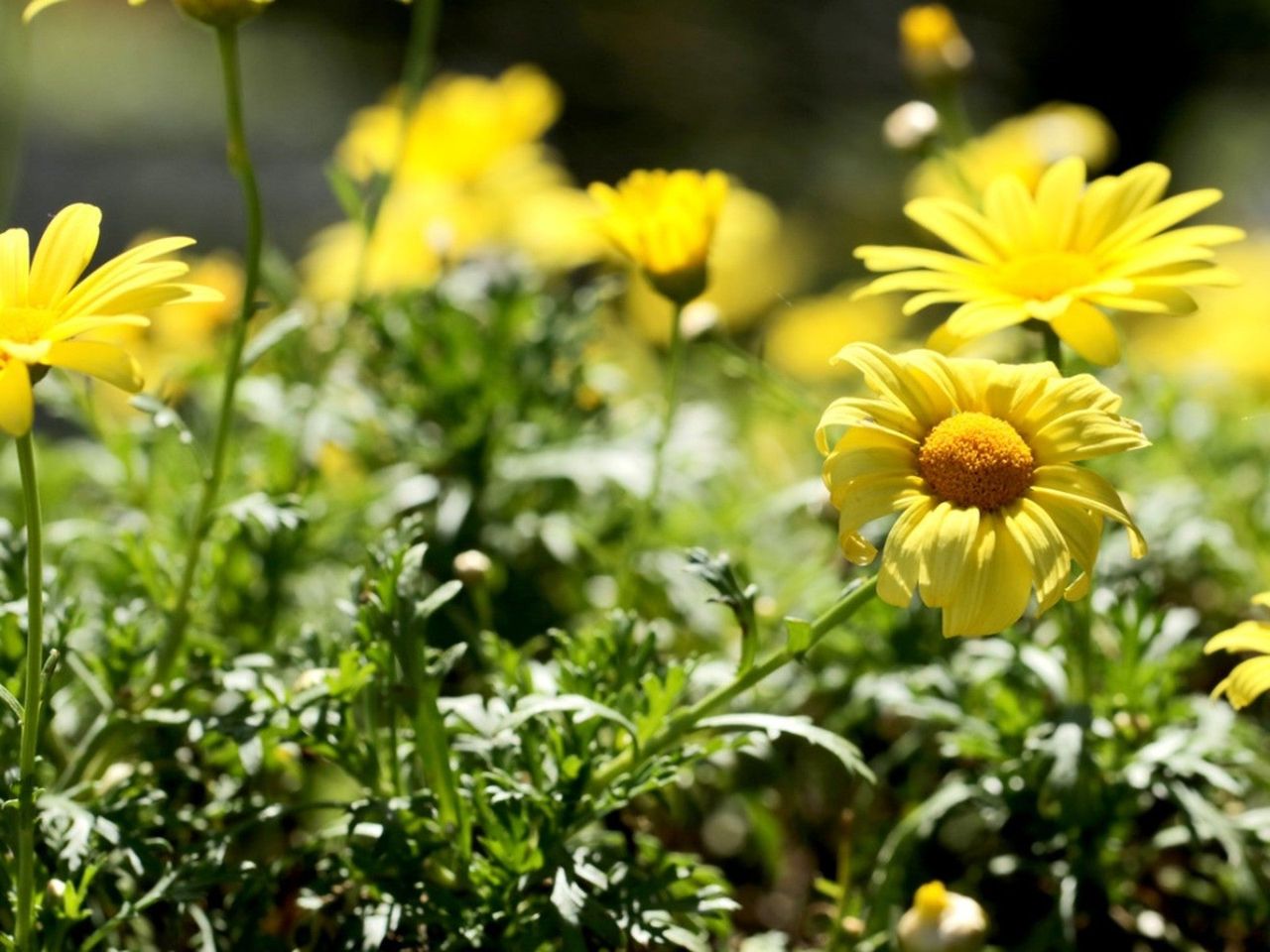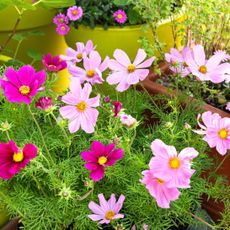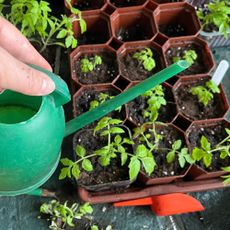Daisy Bush Care: How To Grow An African Bush Daisy


African bush daisies are victims of a common horticultural identity crisis. Botanists are routinely reclassifying plants as they identify each family and genus more accurately with DNA testing. This means plants like African bush daisy may bear the scientific name Gamolepis chrysanthemoides or Euryops chrysanthemoides.
The important distinction between the two is the latter part of the name. This indicates that no matter the name, African bush daisy, while a member of the Asteraceae family, takes on the characteristics of common chrysanthemums. Details on how to grow an African bush daisy follow.
Euryops Bush Daisy
The Euryops daisy is a large perennial bush that grows well in warm climates in USDA zones 8 to 11. The plant will bloom all season long or until cold temperatures appear with yellow, daisy-like flowers. The deeply cut, lacy leaves cover a bush that may get 5 feet (1.5 m.) tall and up to 5 feet (1.5 m.) wide.
Choose a well-drained, but moist, bed in full sun for growing bush daisies. The Euryops bush daisy makes a great border, container, or even rock garden display. Provide plenty of space for mature plants when choosing where to plant the bushes.
How to Grow an African Bush Daisy
The Euryops daisy starts easily from seed. In fact, the bush will readily reseed itself in its habitat. Start seeds indoors in flats eight weeks before the last expected frost in the cooler zones. Plant outside on 18 to 24 inch (45-61 cm.) centers. Once your African bush daisy has established, it has very low maintenance requirements.
The lovely flowers are produced in abundance without extreme daisy bush care. For high performance and exceptional display, the Euryops bush daisy cannot be beat in warm and temperate climates.
Daisy Bush Care
In the warmer zones that are appropriate for African bush daisies, little supplemental care is required for a year-round display. In zone 8, cold temperatures, and even periods of freezing, will cause the plant to die back, but it usually re-sprouts in spring.
Gardening tips, videos, info and more delivered right to your inbox!
Sign up for the Gardening Know How newsletter today and receive a free copy of our e-book "How to Grow Delicious Tomatoes".
To ensure the plant's resurrection, pile 3 inches (8 cm.) of mulch around the root zone of the plant. Cut down the dead stems in early spring to make way for the new growth. African bush daisy may also be grown in cooler zones as an annual during the summer. When temperatures are consistently lower than 60 degrees F. (16 C.) flower production will suffer.
Fertilize in spring with an all-purpose fertilizer. As a rule, the stems of the Euryops daisy are sturdy, but occasional staking is necessary. Nematodes are the biggest problem of African daisies and can be combated with beneficial nematodes. This plant is so easy to care for that it makes a perfect addition to the warm season garden.

Bonnie Grant is a professional landscaper with a Certification in Urban Gardening. She has been gardening and writing for 15 years. A former professional chef, she has a passion for edible landscaping.
-
 How To Grow A Cut Flower Container Garden – For Gorgeous Fresh Blooms Even In Small Spaces
How To Grow A Cut Flower Container Garden – For Gorgeous Fresh Blooms Even In Small SpacesCut flower cultivation may bring to mind tall, statuesque plants in beds and borders – but you can also grow a cut flower container garden for bold blooms in smaller spaces
By Tonya Barnett
-
 How Often To Water Seedlings? The Best Schedule For Healthy Growth
How Often To Water Seedlings? The Best Schedule For Healthy GrowthLearn how much to water seedlings at every stage of the growing process – from germination to transplanting in the garden – plus the best methods for success.
By Teo Spengler